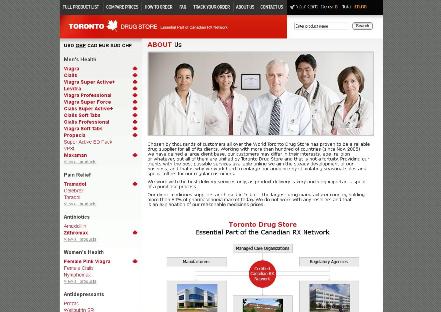Estradiol in Men: Importance and Health Implications
What Is Estradiol and Its Basic Function?
Estradiol is a key player in the hormone symphony, renowned primarily for its role in female biology. However, it's no undercover agent in men either; instead, it holds its own as an important compound. Estradiol is a part of the estrogen family, setting the stage for a host of physiological functions typically scripted in prescriptions for balance within the body. For men, estradiol helps maintain harmony through a detailed hormonal balance with testosterone. Think of it as a cocktail mix that's perfectly shaken—without it, nothing hits the right notes, disrupting the body's rhythm and leading to disharmony in health and wellness.
| Role | Description |
|---|---|
| Structural Compound | Integral to bone density and growth |
| Hormonal Harmony | Balances testosterone impacts |
| Physiological Regulator | Manages maintenance of cholesterol levels and mood stability |
In a landscape often painted with testosterone when discussing male hormones, estradiol quietly ensures the foundation is not forgotten, safeguarding crucial functions such as bone density and fat distribution. Just as with a drive-thru pharmacy's smooth operation needing organized processes behind the scenes, the subtle yet vital contributions of estradiol in male health underscore its crucial nature in a man's script for well-being.
The Role of Estradiol in Male Physiology

In the complex dance of hormones within the male body, estradiol plays an often underestimated yet crucial role. This form of estrogen is not just a female hormone; it's significant for men too. Estradiol is involved in regulating libido, erectile function, and even maintaining cholesterol balance. A healthy level boosts sexual health and overall vitality, much like filling a prescription where the right balance of meds ensures optimal health outcomes.
Moreover, estradiol is crucial in maintaining bone density, a factor often overshadowed by the emphasis on testosterone. As men age, testosterone levels might dip, and the body compensates by altering estradiol levels, a natural adjustment that sometimes requires the intervention of a compound medication to maintain balance.
An imbalance in estradiol can lead to various health issues, manifesting as changes in energy levels, mood swings, or other symptoms that might necessitate an immediate elixir in the form of lifestyle changes or medication to restore equilibrium. Understanding the interplay between estradiol and other hormones can help men navigate the complexities of their physiology with greater awareness and health literacy.
Estradiol and Its Impact on Bone Health
Estradiol plays an essential role in maintaining bone density, even in men. This hormone helps regulate bone turnover, balancing between the breakdown and formation of bone tissues. When estradiol levels drop, men might find themselves facing unexpected challenges in bone health, potentially leading to fractures or osteoporosis. Addressing this issue isn't just about popping happy pills; it's imperative to understand the underlying hormonal orchestra.
Lifestyle factors significantly affect estradiol levels and, consequently, bone health. Men should avoid common pitfalls that resemble a night drop of wellness, such as a lack of exercise or poor nutrition. Simple lifestyle changes, like engaging in regular weight-bearing exercises and maintaining a balanced diet rich in calcium and vitamin D, can help keep bone health on the right track. Taking proactive measures can ensure that men aren't left dealing with the elixirs of regret later in life.
Understanding Hormonal Balance: Estradiol and Testosterone

In the male body, estradiol and testosterone play a pivotal role in maintaining hormonal equilibrium. While testosterone is often heralded, estradiol, a surprising key player, helps in refining subtle aspects of health. It's like understanding both the elixir of youth and its container. Testosterone and estradiol balance each other, ensuring that neither aspect dominates. This balance is crucial as an imbalance might bring symptoms akin to a hangover, with adverse effects on mood and vitality. Estrogen aromatization within tissues converts testosterone, preventing toxic buildup. Hence, maintaining this cocktail of hormones in harmony is essential to uphold overall well-being and prevent potential health implications.
Symptoms of Estradiol Imbalance in Men
Symptoms of estradiol imbalance in men may manifest in various forms, such as unexplained fatigue or changes in libido. Imagine this hormonal orchestration going awry; it's like finding a 'Red Flag' in the symphony of your body. An increase in estradiol can lead to mood fluctuations, just as 'Zombie Pills' might induce drowsiness. The body might resemble a pharmacy 'Pushing Tin', struggling to keep everything balanced and harmonious.
Physical indicators may also surface, including unexpected weight gain or gynecomastia, where breast tissue swells. This can feel like facing a 'Sticker Shock' when confronting your reflection. Changes in bone density or challenges in maintaining muscle mass can signal trouble, akin to experiencing the financial 'Hangover' from frequent health checkups. These are symptoms of a deeper hormonal imbalance that demand a closer look through 'Quality Time' with healthcare professionals.
```html
| Symptom | Description | Slang Used |
|---|---|---|
| Fatigue | Constant tiredness not alleviated by rest | Red Flag |
| Mood Fluctuations | Variations in mood similar to effects of strong sedatives | Zombie Pills |
| Weight Changes | Unexpected weight gain, impacting self-perception | Sticker Shock |
| Bone Density Loss | Decreased bone strength, increasing fracture risk | Hangover |
How Lifestyle Choices Influence Estradiol Levels
Men's lifestyles significantly shape their estradiol levels, influencing their overall health. For example, body weight plays a crucial role; increased fat tissue can convert testosterone to estradiol. Alongside weight management, diet choices impact estradiol. Consuming a balanced mix of nutrients can maintain hormonal equilibrium, whereas excessive alcohol intake may disrupt it. Physical activity is another vital factor. Regular exercise helps regulate hormone levels, potentially reducing unwanted side effects linked with estradiol imbalance. Meanwhile, environmental factors like stress and exposure to certain chemicals further contribute to hormone fluctuations. Incorporating healthy routines can prevent estradiol-related complications, avoiding an unexpected "pharmageddon" of prescription needs down the line.

